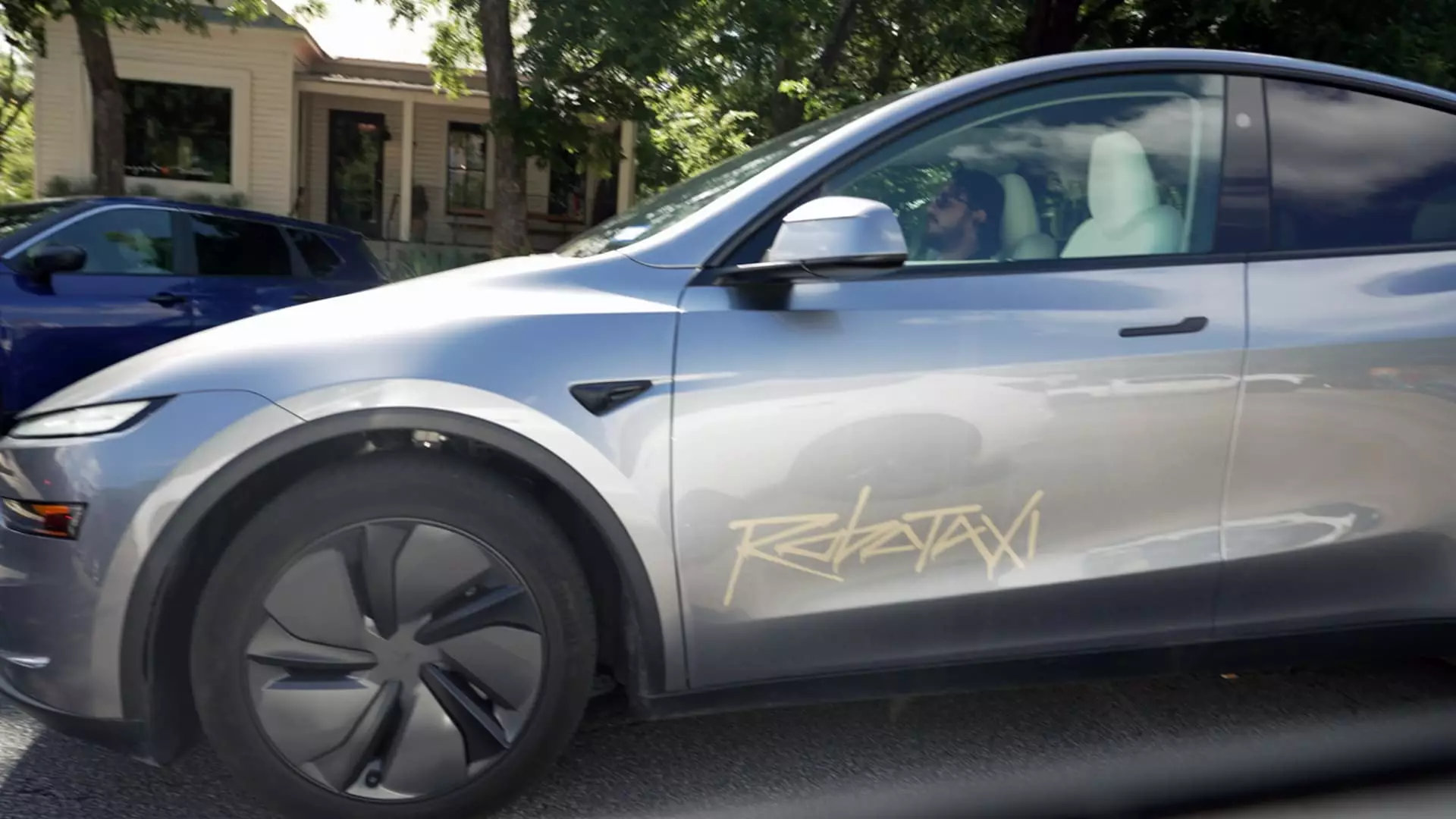Tesla’s foray into the autonomous vehicle market, particularly the deployment of Robotaxis, signals a significant shift in how we perceive urban transportation. By applying to operate its self-driving fleet in Phoenix, Arizona, Tesla is positioning itself at the forefront of a rapidly evolving industry that promises to reshape daily commutes, reduce congestion, and revolutionize mobility. This move signifies more than mere expansion; it underscores Tesla’s determination to challenge existing market leaders like Waymo and to redefine the economics of driverless vehicles through innovative technology choices.
The strategic choice of Phoenix is intriguing. Arizona’s lenient regulatory environment and favorable weather conditions offer an ideal testing ground for autonomous vehicles. Tesla’s interest in operating within the Phoenix Metro area reveals a calculated effort to gather real-world data, test its vehicles’ robustness, and gain regulatory approval—necessary steps before broader deployment. The timeline, with a decision expected by July, highlights Tesla’s urgency in scaling its autonomous mobility services, driven by competitive pressures and technological advancements.
This initiative follows Tesla’s recent pilot projects in Austin, Texas, where Model Y SUVs equipped with Tesla’s latest Automated Driving systems are testing in real-world environments. Notably, Tesla’s approach relies heavily on cameras and neural network-based perception rather than more costly sensors like lidar, aiming to keep costs down and improve profitability. However, this strategy’s success remains under scrutiny, given the safety incidents caught on camera, raising questions about reliability and regulatory compliance.
Challenges and Controversies: Tesla’s Road to Autonomous Legitimacy
Tesla’s pursuit of autonomous taxis is fraught with hurdles that cannot be overlooked. The company’s earlier efforts in Austin have been marred by publicized accidents and regulatory interventions, notably from the National Highway Traffic Safety Administration (NHTSA). Videos capturing Tesla Robotaxis hitting parked cars or violating traffic laws have fueled skepticism over the safety and readiness of Tesla’s self-driving technology.
While Tesla markets its systems as “Full Self-Driving” capable, critics argue that the technology remains imperfect and that Tesla’s safety claims may border on overstated. The company has faced lawsuits and regulatory scrutiny, such as California’s 2022 lawsuit alleging false advertising about its self-driving capabilities. These issues cast doubt on Tesla’s timeline for widespread deployment and raise questions about the company’s commitment to safety versus speed-to-market.
Furthermore, the operational model—remote supervision and human safety drivers—blurs the line between autonomous and traditional ride-hailing services. The presence of safety drivers as “supervisors” indicates an acknowledgment of current technological limitations, yet it also opens up debates over whether Tesla’s Robotaxis are truly autonomous or simply advanced driver-assistance systems. These nuances influence public trust and regulatory decisions that could either accelerate or hinder Tesla’s ambitions.
Competitive Edge or Overreach? The Battle with Industry Giants
Tesla’s confrontation with established players like Waymo is emblematic of an industry at a crossroads. Waymo’s extensive experience, proven safety record, and sizable operational fleet have given it a competitive edge in the autonomous taxi space. Tesla’s strategy to relying mainly on cameras and AI, instead of lidar, aims to cut costs and democratize autonomous rides—an appealing proposition that could disrupt the existing supply chain and pricing models of autonomous vehicles.
However, Tesla’s aggressive rollout and bold claims might also prove detrimental if safety and regulatory compliance are compromised. The industry needs to balance innovation with rigorous testing and verification, especially as autonomous vehicles become more integrated into daily life. Tesla’s decision to potentially expand to the San Francisco Bay Area, without current approvals, suggests a willingness to push boundaries—but it must be cautious. Regulatory authorities, already wary of Tesla’s marketing claims, will scrutinize any rush to deployment.
Tesla’s approach embodies a gamble: leveraging its massive brand influence and technological ingenuity to reshape urban mobility against the cautious, methodical tactics of competitors. Whether this gamble will pay off depends on Tesla’s ability to reconcile technological innovation with unwavering safety standards, earning public trust and regulatory validation along the way.
The Road Ahead: A Critical Test of Tesla’s Autonomous Vision
Tesla’s ongoing efforts spotlight an industry in transition—one where ambition often outpaces safety and regulation. The next few months will be pivotal; an approval in Arizona could mark a major milestone, indicating regulatory confidence in Tesla’s autonomous capabilities. Conversely, any setbacks or safety incidents could stall or undermine the company’s narrative of being a pioneer.
Tesla’s upcoming earnings call on July 23 will be closely watched for insights into the company’s progress and plans. Musk’s announcement of a potential expansion into California, despite ongoing regulatory resistance, underscores an urgent desire to establish dominance in the autonomous taxi sector. Ultimately, Tesla’s success will hinge on its ability to deliver vehicles that are not only technologically advanced but also safe, reliable, and publicly accepted.
What’s clear is that Tesla’s Robotaxi initiative, whether ultimately triumphant or flawed, has already catalyzed fierce industry debate. It has forced competitors, regulators, and consumers to reconsider what autonomous transportation can—and should—look like. By challenging norms and pushing technological boundaries, Tesla continues to shape the future of mobility, irrespective of the hurdles that lie ahead.

